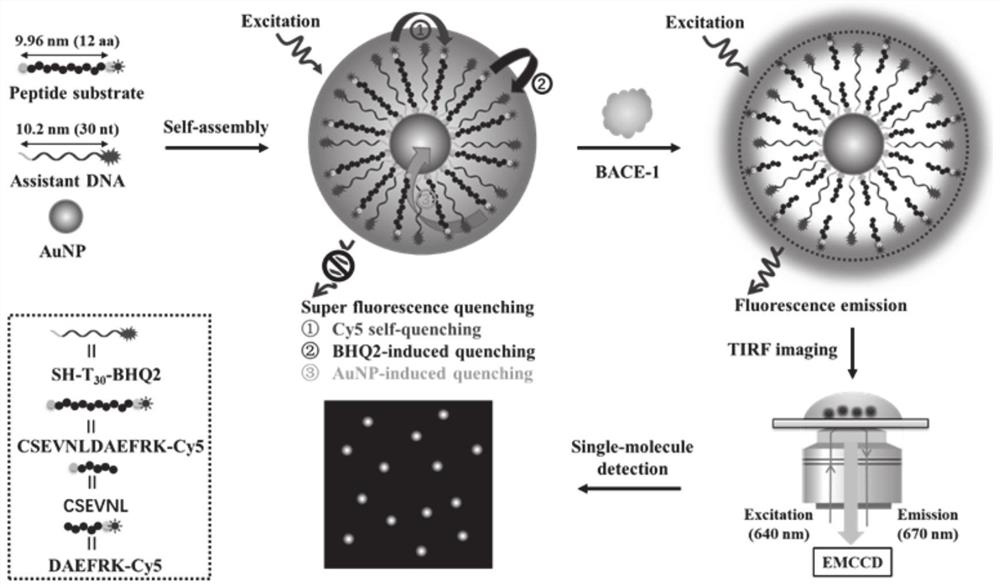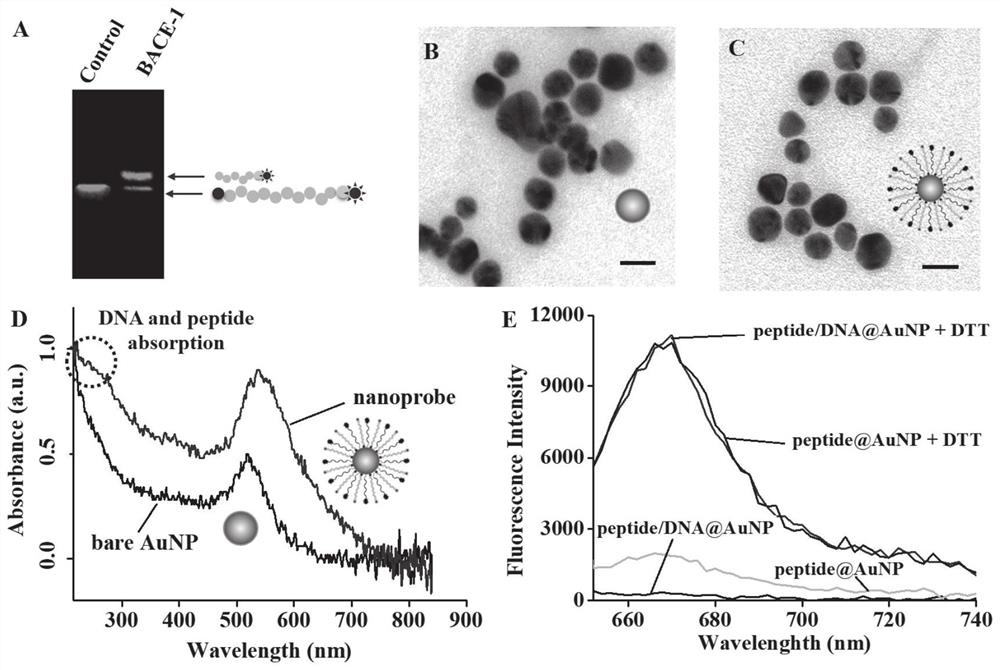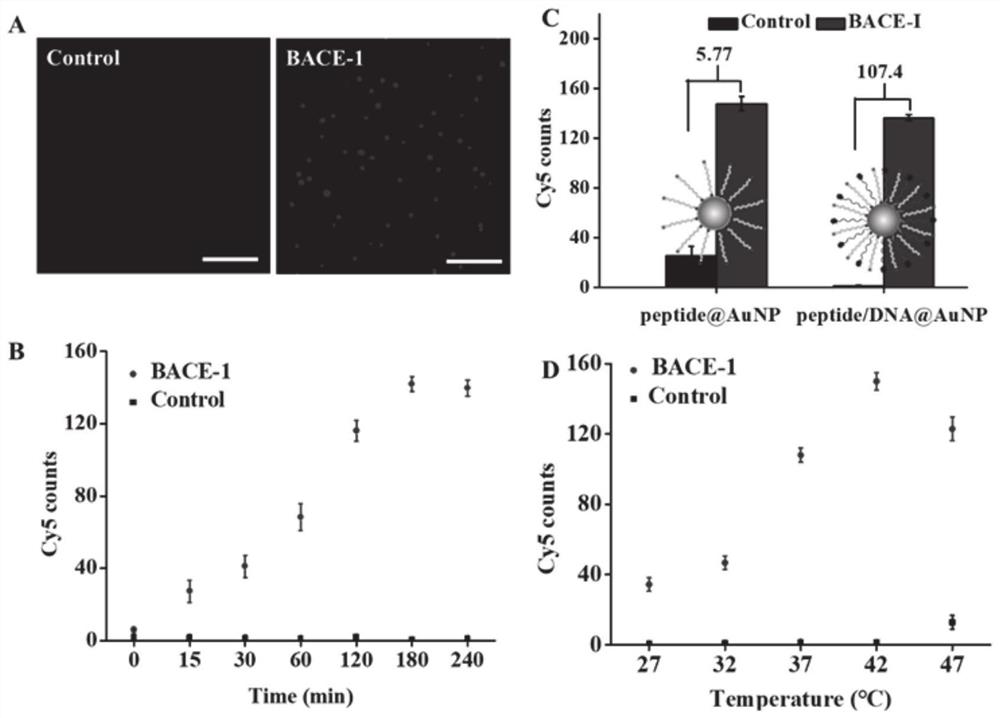Self-assembled super-quenched gold nanoparticle nano sensor and preparation method and application thereof
A gold nanoparticle and nanosensor technology, applied in the field of biological analysis, can solve problems such as affecting fluorescence quenching, affecting analysis accuracy and sensitivity, high background signal, etc., to avoid signal amplification steps, reduce sample consumption, and improve dissociation. The effect of efficiency
- Summary
- Abstract
- Description
- Claims
- Application Information
AI Technical Summary
Problems solved by technology
Method used
Image
Examples
Embodiment 1
[0069] Preparation of gold nanoparticle nanoprobes: AuNP nanoprobes were prepared by a typical salt aging method. The peptide probe (CSEVNLDAEFRK, see SEQ ID NO.1 for amino acid sequence) and auxiliary DNA (Cy5-SH-TTTTTTTTTTTTTTTTTTTTTTTTTTTTTTTT-BHQ2, The nucleotide sequence is detailed in SEQ ID NO.2) Add 1 ml of AuNP solution (7.0×10 11 Particles per milliliter), placed in PBS buffer containing 0.1% Tween 20 (10 mmol per liter of phosphate solution (NaH 2 PO 4 / Na 2 HPO 4 ), pH 7.4). After incubating at room temperature for 20 minutes, gradually increase the NaCl concentration to 0.3 mol per liter within 24 hours, and then incubate at 4°C for 24 hours to complete the functionalization reaction. The solution was centrifuged 3 times at 12000 g for 15 minutes each time to remove unbound peptide probes and auxiliary DNA, and then resuspended in 60 microliters of PBS buffer (10 mmol per liter of phosphate solution, 0.3 liter NaCl, pH 7.4) and stored at 4°C.
[0070] Gold n...
Embodiment 2
[0077] Experimental verification of principle
[0078] The principle of the technical solution of the present invention: the C-terminus is designed as a sensing probe with a Cy5-labeled peptide segment (CSEVNLDAEFRK). In this sensing probe, the Swedish APP mutant fragment (SEVNLDAEFR) is selected instead of the wild-type APP fragment (SEVKMDAEFR) as the sensing probe. BACE-1 substrate, because it can be cleaved by BACE-1, and the cleavage efficiency is higher than wild type. In addition, cysteine residues (C) containing sulfhydryl groups (SH) allow peptide probes to bind to the surface of AuNPs via Au-S bonds, while lysine (K) residues containing amino groups can bind peptide amines via Cy5 carboxyl groups. The condensation reaction of the Cy5 group facilitates the labeling of the Cy5 group. According to the distance between adjacent amino acids of 0.83 nm, the length of the polypeptide probe was determined to be 9.96 nm, so the spatial separation of AuNP and Cy5 would lead...
PUM
| Property | Measurement | Unit |
|---|---|---|
| Diameter | aaaaa | aaaaa |
Abstract
Description
Claims
Application Information
 Login to View More
Login to View More - R&D
- Intellectual Property
- Life Sciences
- Materials
- Tech Scout
- Unparalleled Data Quality
- Higher Quality Content
- 60% Fewer Hallucinations
Browse by: Latest US Patents, China's latest patents, Technical Efficacy Thesaurus, Application Domain, Technology Topic, Popular Technical Reports.
© 2025 PatSnap. All rights reserved.Legal|Privacy policy|Modern Slavery Act Transparency Statement|Sitemap|About US| Contact US: help@patsnap.com



